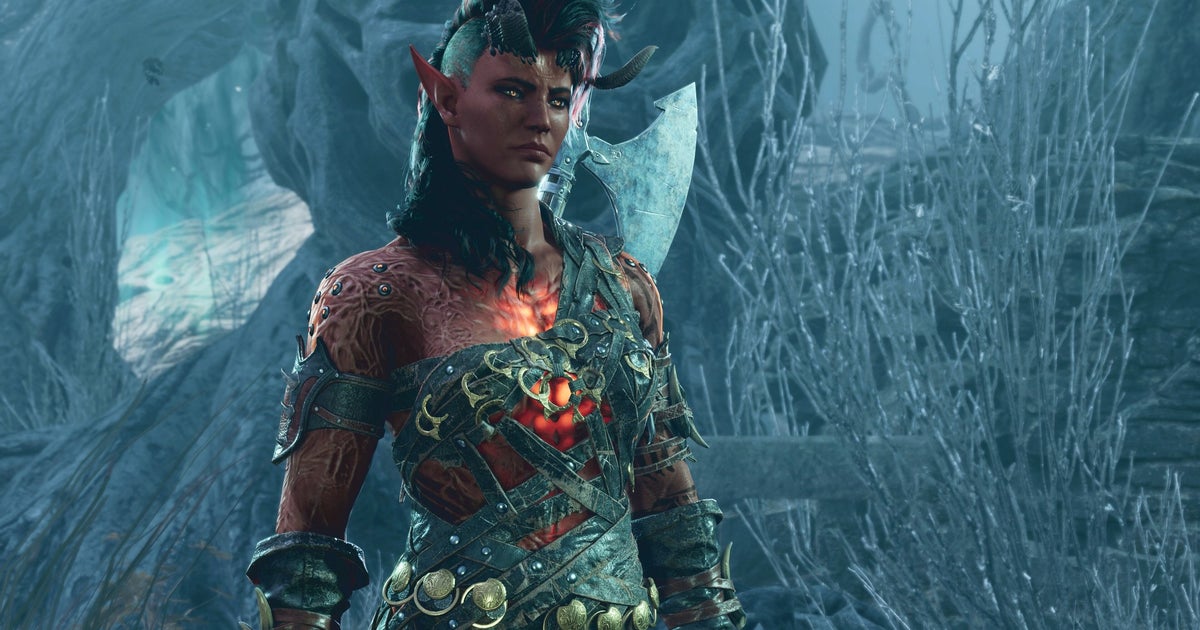Should put this whole issue to rest (for a while, at least 😉).

I don’t care about split screen but more evidence that the Series S was a mistake. At the very least Microsoft is going to have to ease up on the requirements.
Edit: It has come to my attention that I need to improve my reading comprehension. This only affects the S. 🤦♂️

The most popular Xbox this generation was a mistake?

Most popular Xbox this generation, as opposed to… the second most popular Xbox this generation?

The point being it’s hardly a mistake if most are buying it over the X.

Is that because people actually want an S… or because they settled because they couldn’t find an X? Everywhere I go there’s tons of S’s available and almost no X’s available. Obviously anecdotal, but maybe it’s not so much buying it over the X as buying it because the X just isn’t in reach… either because of price (though if you can’t afford a hundred dollars extra for a console… you can’t really afford the console at all, and you’re just justifying it to yourself) or because of lack of availability in general.

Just a note, it’s not $100 difference. It’s $200 difference ($300 vs $500). Having said that, the only reason I got the SS was because I couldn’t get the SX. I tried and failed. I would have preferred a $400 digital version of the SX even. Settled for the SS. Had to get an SSD expansion card, feature parity is apparently not a thing, had to rebuy a couple games digitally.

So, does that mean the X was a mistake since the S has more sales? What is your point

No it means there’s clearly more demand for the S. My point is you claiming it was a mistake could not have been any less accurate.

I never said it was a mistake? I’m just saying what you said was meaningless…
The dreamcast is the most popular SEGA console of its generation. A raging success!

I don’t think it was a mistake, it brought next gen gaming to people that can’t afford, or don’t need the highest spec machines. I have a series S so I can play Xbox games with my son, I also have a gaming PC and steam deck. The price of the S allowed me to justify buying this, but I wasn’t about to drop the dough on an X just to play a few Xbox games

It’s less powerful than an Xbox One X. I think the problem is that they didn’t really think through what a console generational leap would actually consist of.

I think they thought through just how important hitting that price point was, because it’s done very well for them.

PS5 outsold both versions combined by around 2x. I don’t think it was nearly that big of a deal.

And do you think that would have panned out better if the cheaper console option wasn’t available? Not to mention it would only leave them with the console that shared a lot of the same components as the PS5 during supply shortages as well.

Microsoft should really ask themselves why they couldn’t have procured more components, despite being one of the most profitable companies on Earth.

I mean, unless their goal is to lose even more money on each console sold, I doubt they were interested in that. But that’s not their goal. Their goal is to get people subscribed to Game Pass.

It’s less powerful than an Xbox One X
Lmao, bruh, no one who has played games on both would ever claim that. It has slightly more raw graphical compute power while having a drastically weaker CPU, slower SSD, slower memory, and slower overall throughput.

It has faster memory than the Series S. More importantly, it has more RAM. A few improvements here and there doesn’t make the Series S a real next-gen console.

As someone who has a One X, a Series S, and a Series X, I can assure you that you have no idea what you’re talking about.
The One X doesn’t get used anymore and the Series S gets used ballpark more often than the series X. Pretty much all games play a very comparable experience on it compared to the series X, something that cannot be said about the One X.

It just isn’t though.

Yeah, I guess calling it a mistake is a bit much but it’s clearly holding the Series X back especially in this case.

Not everyone is able to afford a gaming PC, let alone a current gen gaming console.
Series S offers them a great opportunity. It is far from a mistake.

The console itself wasn’t a mistake. Their promises of feature parity was the mistake.
Not making it have the same amount of RAM was also a mistake, it could have been just a weaker GPU which would have had less issues.

Whoever made that decision obviously never worked in gamedev.

I don’t think anyone in these comments has worked in gamedev.

I was talking about the person(s) at Microsoft, who decided that it’s a good idea to have less RAM on the Series S than on the Series X…
(And for context: I work in gamedev, and in my experience making games stay within the memory budget is one of the toughest parts of porting games to consoles.)

who decided that it’s a good idea to have less RAM on the Series S than on the Series X…
Supply chains are complicated, and MS probably did their due diligence to ensure minimal blockages. From seeing the memory structures of newer video cards, I’m pretty sure there are supply constraints to memory to think of.
Honestly I think gamedevs leaning on memory this hard instead of compute is a mistake. You can have intelligently tiled, procedurally generated textures and have a lot more of them, but instead everyone is leaning on authored content on disc. This goes against industry trends in non-game rendering where procedural generation is the norm. If Doom Eternal can look that good with forward rendering, there are no excuses.
My main beef with the hate on the Series S is that both times it’s been a big deal (BG3 and Halo Infinite), it has been split screen which has held back shipping. The community would be as justified going after split screen as they are going after the Series S.

Tell that to our artists 😉. As a coder I’m all for procedurally generated content. I did replace several heavy textures in our games by procedural materials, to squeeze out a couple of extra MB. However, that’s not the way artists traditionally work. They often don’t have the programming knowledge needed to develop procedural materials on their own, and would need to rely on technical artists or programmers to do so. Drawing a texture however, is very much part of their skillset…
But yeah, the mention of “squeezing out a couple of MB” brings me to another topic, namely that (at least in our games) the on-disk textures are only part of the RAM usage, and a relativley small one on comparison. In the games I worked on, meshes made up a significantly larger amount of RAM usage. We have several unique assets, which need to fulfill a certain quality standard due to licensing terms, such that in the end we had several dozens of meshes, each over 100 MB, that the player can freely place… Of course there would still be optimization potential on those assets, but as always, there’s a point where further optimization hits diminishing returns… In the end we had to resort to brute-force solutions, like unloading high quality LODs for meshes even if they are relatively close to the player… Not the most beautiful solution, but luckily not often needed during normal gameplay (that is: if the player doesn’t intentioally try to make the game go out-of-memory).
But I’m rambling. The tl;dr is: The memory constraints would not be a big deal if there was enough time/money for optimization. If there is one thing that’s never enough in game dev, it’s time/money.

OK so this is now offtopic for the conversation, but…
However, that’s not the way artists traditionally work.
To some extent, it’s authoring tools which affect how they work. A procedural materials pipeline can help them compose on top of already procedural content. In a way, you could see PBR as a part of that pipeline because PBR materials are physics modelled. Having said that I do take your point, even building out that pipeline takes time. Creating a PBR materials library is not super easy, and obviously organic stuff is very hard to model as a material.
meshes made up a significantly larger amount of RAM usage
From watching blender modelling, I thought the pattern was to have minimal rigging on the base mesh and then tesselation via normal maps + subdivision (apparently this is very doable even with sculpting). Obviously for animation you need a certain quality but beyond that I thought everything would be normal maps, reflection maps, etc etc.

If it was a mistake, how the game now coming to Series S proving that? The only thing it proves is that split screen is a demanding feature and MSFT shouldn’t impose parity of that, which they shamelessly accepted after the success of BG3. It’s still a good console to play modern games, of course not at best fidelity, but I don’t think that matters.
Edit: just realised you’re saying that with an incorrect conclusion that split screen wouldn’t be coming on Series X. Well, that isn’t the case, and probably brings the game to more people with least amount of harm.

I thought Microsoft was the one requiring feature parity. It sounds like the real story is MS caving.

Yes. It’s in the Xbox Requirements, as in, the checklist of stuff you need to fulfill if you want to release a game on Xbox. To be precise, it’s test case 130-04: Featured Game Modes.

The right decision due to how it runs. It’s basically two copies of the game going at once. None of this players not being able to stray too far from each other nonsense like other local co-op games.

This is great news. Glad to see Xbox players will get to play this fantastic game!!

I remember split-screen being real shaky for D:OS2 on the PS4. Not surprised that they struggled to get it working for this even-more-demanding game on a resource-limited console.

